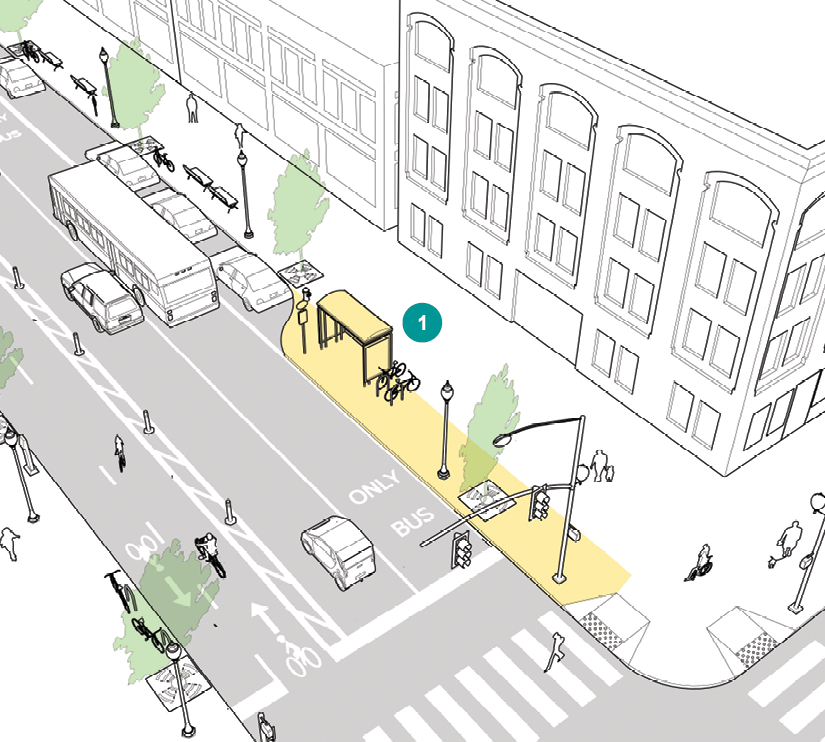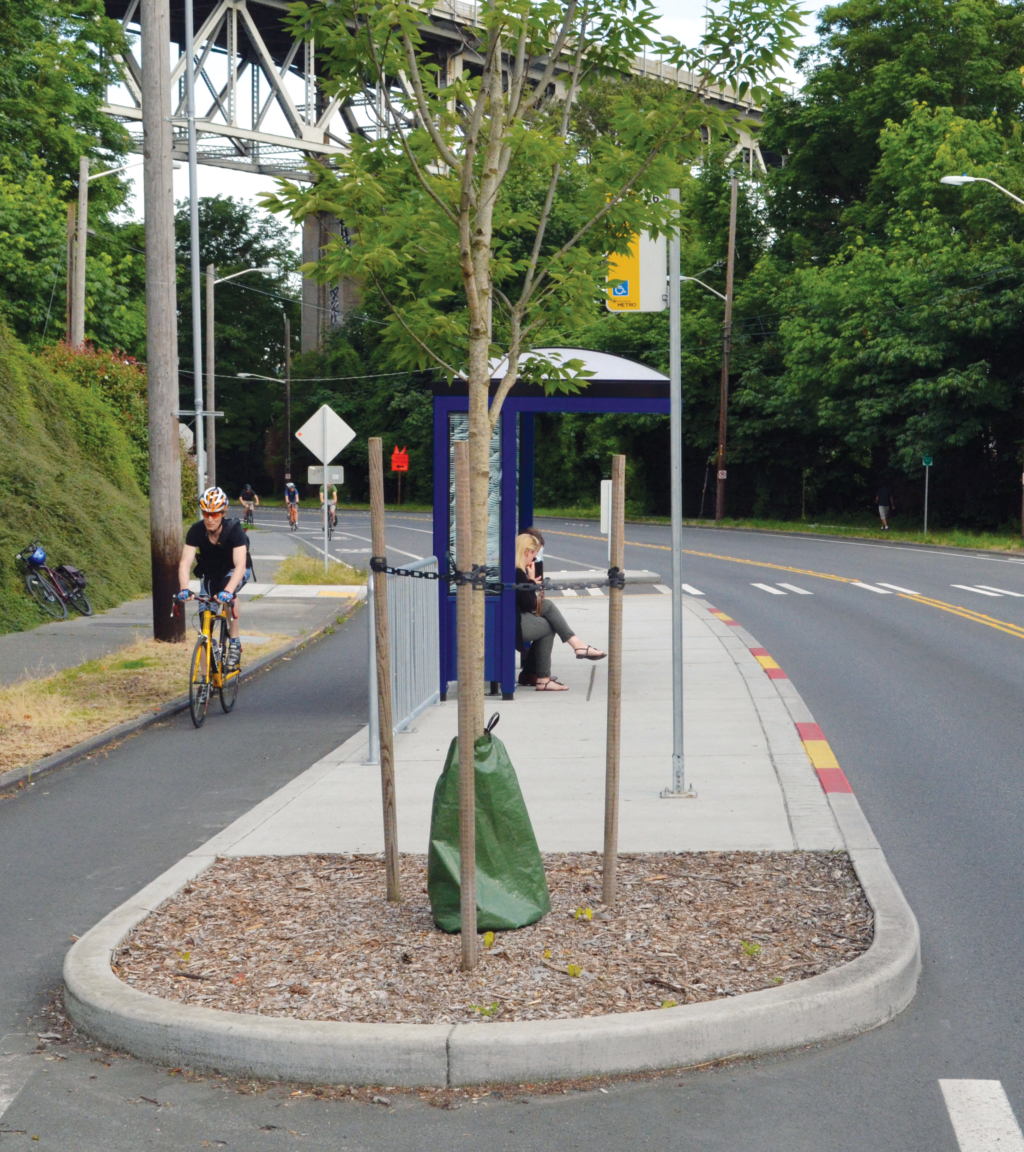Bus bulbs are curb extensions that align the bus stop with the parking lane, allowing buses to stop and board passengers without ever leaving the travel lane. Bus bulbs help buses move faster and more reliably by decreasing the amount of time lost when merging in and out of traffic.

Critical
Bus bulbs have a desired length of the equivalent of two buses for a route with frequent service (e.g., 140 feet for two articulated buses). Routes with less frequent service may have the length of one bus from the front of the vehicle to the back door (e.g., 30 feet). The width should reflect the need for maneuvering and accommodation of bus shelters, at least 6 feet but preferably 8–10 feet.1
Cities should work with transit providers to determine the clear width necessary to deploy a wheelchair accessible lift onto the bus bulb.
A bus bulb should be roughly equal to the width of the parking lane with a return angle of 45 degrees.2
Recommended
Use cut-throughs for curbside bike lanes and cycle tracks at intersections and midblock bus bulbs. Curbside bike lanes should not be dropped on the approach to an intersection with a curb extension.
Where a near-side bus bulb is combined with a turn restriction, design the curb to self-enforce the turn restriction and monitor closely to ensure that transit vehicles are not suffering from delays.
1Bus bulbs should be equipped with transit shelters whenever possible. Shelters make transit more attractive and may be combined with off-board fare collection for faster payment options.

The bike lane can be routed behind a bus boarding island.
Optional
When applied near-side, bus bulbs may require right-turn-on-red restrictions where motorists are likely to queue in the right-hand lane. At these locations, enforcement is absolutely necessary to ensure that the curb extension serves its purpose successfully.
Bus bulbs may be combined with amenities such as wayfinding maps, plantings, and trees to enhance the overall transit user experience.
- Length and width of bus bulbs varies based on street geometry, vehicle types, and urban context. Thirty-foot bus bulbs are widely used for non-articulated buses operating two doors. Longer extensions may be required for articulated buses and shorter bulbs may be possible for buses operating a single door. In Portland, Oregon, all bus bulbs are 6 feet wide to provide a 2-foot “shy zone” between the bulb and the travel lane.
Kay Fitzpatrick et al., TCRP Report 65: Evaluation of Bus Bulbs (Washington, D.C.: Transportation Research Board, 2001), 5. ↩︎ - Cities adopt different interior radii based on street sweeping, snow removal, and design priorities. Wide, curving radii, where space allows, facilitate street cleaning. Sharper angles preserve more on-street parking. Forty-five-degree return angles allow for cleaning and preserve parking.
San Francisco Better Streets Plan (San Francisco: City of San Francisco, 2010), 5.3.
Best Practices for Pedestrian Master Planning and Design (Sacramento: Sacramento Transportation & Air Quality Collaborative, 2013), 14–15. ↩︎